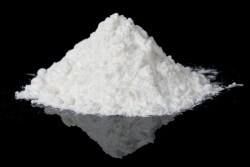
A product called Palcohol, or powdered alcohol, is set to hit the market this fall – but it’s not a new invention. The packets of powdered alcohol made by Lipsmark may have made it farther than any other product of its kind in terms of making it into the hands of American consumers, but it’s not a new idea.
A Japanese company called Sato Foods Industries first came up with the idea in the 1970s, using it as an additive to aid in preserving and processing food. Their goal was to use the powdered alcohol to mask the smell of certain preserved meats and trap the natural juices, thus increasing its tenderness.
General Foods Corporation quickly followed up on the invention and applied for a patent to bring “alcohol-containing dextrin powder” to the US. They said their intent was the same flavor-enhancing benefits but they also wanted to be the first to secure a patent on powder that could be used as a “base for alcoholic beverages.”
That didn’t work out. Then small companies in Germany, the Netherlands, and here in the US have successfully created their own versions of powdered alcohol – none of them stuck either. There was always a problem: too few sales if it did hit the market, too many regulations to contend with, etc.
But Palcohol is potentially poised to overcome all of these issues and land their packets of powdered alcohol on shelves. With six different flavors to choose from, they suggest that you sprinkle it on food “for an extra kick” or dissolve it in water. It’s designed to create an alcoholic beverage that is 10 to 12 percent alcohol, which is about twice what is found in most 12-ounce beers.
There are a lot of potential problems with the product. First, powders can be snorted, and though there are no scientific studies to point to, it stands to reason that this practice could cause alcohol poisoning or other adverse reactions fairly easily. Along that same line, we don’t know how use of alcohol in this form will impact the body, whether or not it will be better or worse in effect physically as compared to liquid alcohol. What will happen if it’s combined with other drugs or mixed with alcoholic beverages? What are the long-term effects of use? There are a lot of unanswered questions.
What Do You Think?
Even if Palcohol doesn’t make it into stores, it’s likely that some version of powdered alcohol will eventually be available to the public. What’s your opinion? Leave us a comment and share your thoughts.


